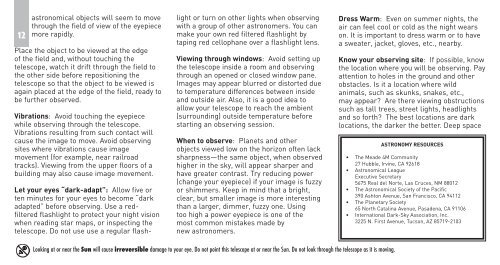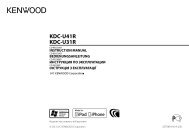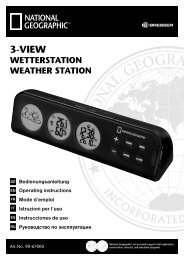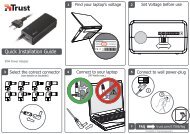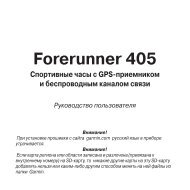TerraStar 60 Manual - Meade
TerraStar 60 Manual - Meade
TerraStar 60 Manual - Meade
Create successful ePaper yourself
Turn your PDF publications into a flip-book with our unique Google optimized e-Paper software.
12<br />
astronomical objects will seem to move<br />
through the field of view of the eyepiece<br />
more rapidly.<br />
Place the object to be viewed at the edge<br />
of the field and, without touching the<br />
telescope, watch it drift through the field to<br />
the other side before repositioning the<br />
telescope so that the object to be viewed is<br />
again placed at the edge of the field, ready to<br />
be further observed.<br />
Vibrations: Avoid touching the eyepiece<br />
while observing through the telescope.<br />
Vibrations resulting from such contact will<br />
cause the image to move. Avoid observing<br />
sites where vibrations cause image<br />
movement (for example, near railroad<br />
tracks). Viewing from the upper floors of a<br />
building may also cause image movement.<br />
Let your eyes “dark-adapt”: Allow five or<br />
ten minutes for your eyes to become “dark<br />
adapted” before observing. Use a redfiltered<br />
flashlight to protect your night vision<br />
when reading star maps, or inspecting the<br />
telescope. Do not use use a regular flashlight<br />
or turn on other lights when observing<br />
with a group of other astronomers. You can<br />
make your own red filtered flashlight by<br />
taping red cellophane over a flashlight lens.<br />
Viewing through windows: Avoid setting up<br />
the telescope inside a room and observing<br />
through an opened or closed window pane.<br />
Images may appear blurred or distorted due<br />
to temperature differences between inside<br />
and outside air. Also, it is a good idea to<br />
allow your telescope to reach the ambient<br />
(surrounding) outside temperature before<br />
starting an observing session.<br />
When to observe: Planets and other<br />
objects viewed low on the horizon often lack<br />
sharpness—the same object, when observed<br />
higher in the sky, will appear sharper and<br />
have greater contrast. Try reducing power<br />
(change your eyepiece) if your image is fuzzy<br />
or shimmers. Keep in mind that a bright,<br />
clear, but smaller image is more interesting<br />
than a larger, dimmer, fuzzy one. Using<br />
too high a power eyepiece is one of the<br />
most common mistakes made by<br />
new astronomers.<br />
Dress Warm: Even on summer nights, the<br />
air can feel cool or cold as the night wears<br />
on. It is important to dress warm or to have<br />
a sweater, jacket, gloves, etc., nearby.<br />
Know your observing site: If possible, know<br />
the location where you will be observing. Pay<br />
attention to holes in the ground and other<br />
obstacles. Is it a location where wild<br />
animals, such as skunks, snakes, etc.,<br />
may appear? Are there viewing obstructions<br />
such as tall trees, street lights, headlights<br />
and so forth? The best locations are dark<br />
locations, the darker the better. Deep space<br />
ASTRONOMY RESOURCES<br />
• The <strong>Meade</strong> 4M Community<br />
27 Hubble, Irvine, CA 92618<br />
• Astronomical League<br />
Executive Secretary<br />
5675 Real del Norte, Las Cruces, NM 88012<br />
• The Astronomical Society of the Pacific<br />
390 Ashton Avenue, San Francisco, CA 94112<br />
• The Planetary Society<br />
65 North Catalina Avenue, Pasadena, CA 91106<br />
• International Dark-Sky Association, Inc.<br />
3225 N. First Avenue, Tucson, AZ 85719-2103<br />
Looking at or near the Sun will cause irreversible damage to your eye. Do not point this telescope at or near the Sun. Do not look through the telescope as it is moving.


